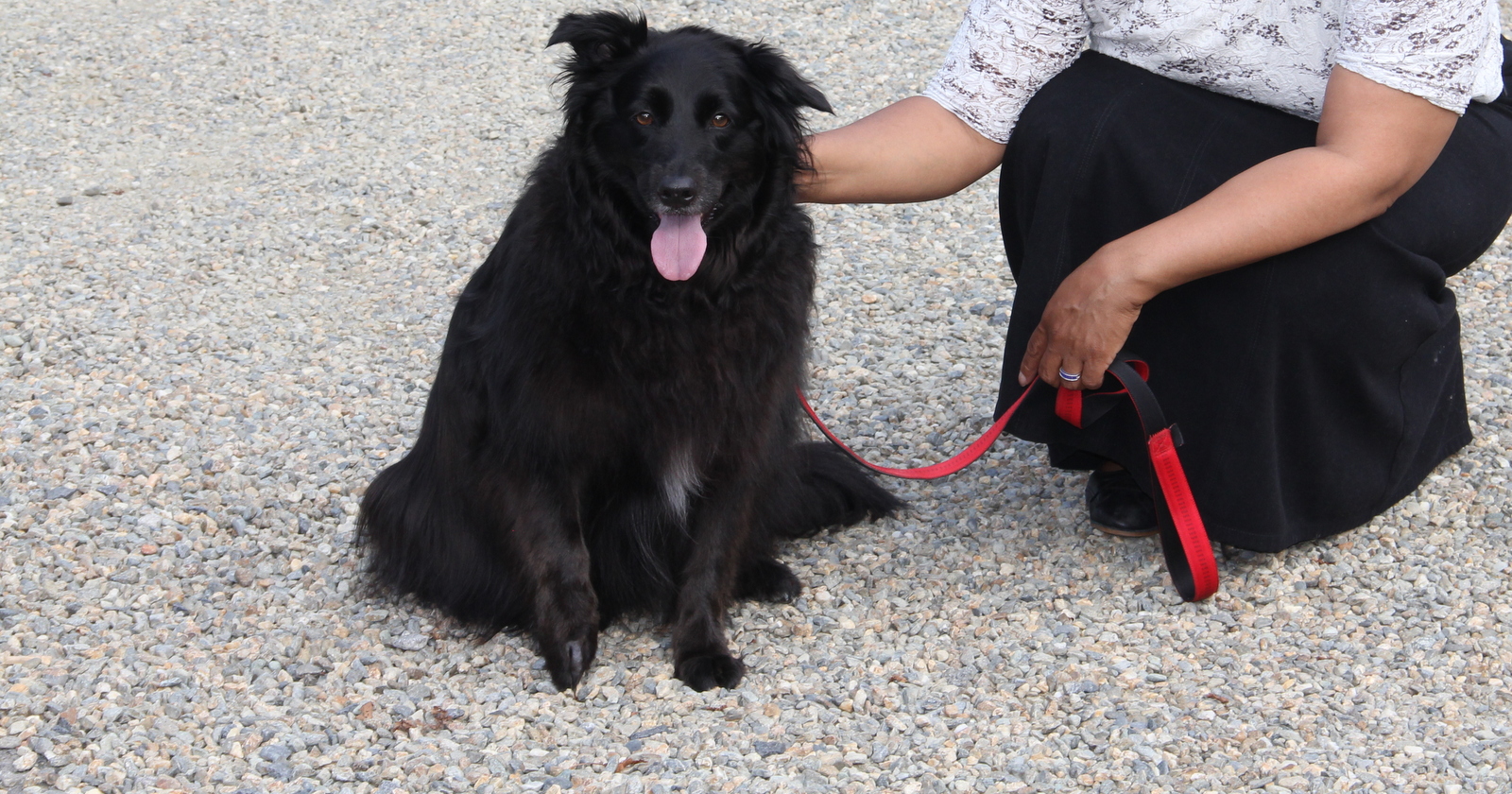Maya rushes everywhere, as if she is eager to experience as much of life as possible. Sharon takes her out for regular long walks, which they both enjoy, and until now, Maya has never suffered any injuries or lamenesses.
This past weekend was typical: on Saturday, Sharon took Maya along the cliff walk from Bray to Greystones, then after refreshments, they walked all the way back again, making a total of around 10km. Maya enjoyed the exercise, showing no sign of getting tired. Then on Sunday, they went for a shorter walk around the Killruddery estate in Bray. Maya went to bed as normal on the Sunday evening, tired, but with no sign of lameness or discomfort.
It was first thing on Monday morning that Sharon knew that there was something wrong: when she woke up, Maya was outside her bedroom door, as if she had been waiting for her. Maya normally sleeps in the kitchen, and she usually stays there until Sharon comes downstairs.
Sharon talked to Maya, as people often do to their pets: “What’s up with you, Maya? Why have you come upstairs?” As if in reply, Maya held up her right front paw, and when she tried to walk on the leg, she couldn’t put any weight on it at all. Sharon checked her leg carefully. There was no sign of any cuts or sore areas, so it was difficult to work out what could have gone wrong. There was a dead bee on the kitchen floor: could Maya have tried to play with the bee and been stung? Later in the day, Maya was still refusing to put any weight on the leg, so Sharon brought her in to see me.
The first aim of a vet examining a lame dog is to pinpoint the focus of pain. I examined Maya’s leg from the tips of her toes right up to her neck, prodding and poking, twisting and pressing. I soon found where the problem was: in the pad on the second toe in her right front leg. The pad was hot and swollen, and when I touched her there, she pulled away from me. She had no pain or discomfort anywhere else in her leg.
I clipped the fur off the painful toe, expecting to a small injury or scrape, but there was nothing. I checked the underside of the pad, looking for signs of a cut, or even a puncture wound (e.g. if she had stood on a drawing pin), but again, there was nothing. I did notice that the lymph gland in front of her right shoulder was enlarged, which was a sign that her body might be dealing with an infection somewhere in the leg. But her temperature was normal, and she was in great form, wagging her tail and full of her usual energy.
I discussed the options with Sharon: we could do further investigations, such as x-rays and blood samples, aiming to reach a definite diagnosis of the problem. But on the other hand, it was likely that such tests would all prove to be normal. I felt that it was most likely that Maya was suffering from some simple cause of pain, such as a bee sting, or a tiny invisible puncture wound that had become infected, leading perhaps a brewing abscess. I felt that there was a good chance that Maya would improve with a simple treatment, so I sent her home with a course of pain relieving tablets and antibiotics.
I texted Sharon the following morning to check on Maya’s progress. The reply was positive: “She’s improved, and walking more normally now”. She’s going to keep resting Maya until she’s finished the medication, and with luck, they’ll both be back to their usual long walks within a couple of weeks.
TIPS
- When a dog is lame, it’s important to pinpoint the focus of pain
- X Rays and other tests are sometimes needed
- Pain relief and rest are often the key to recovery from minor injuries

